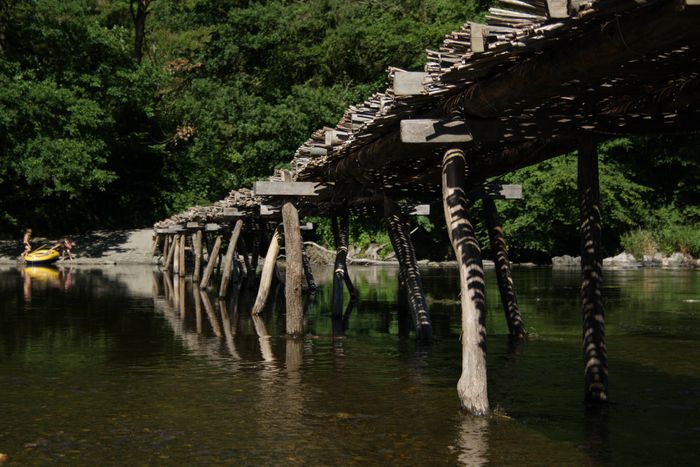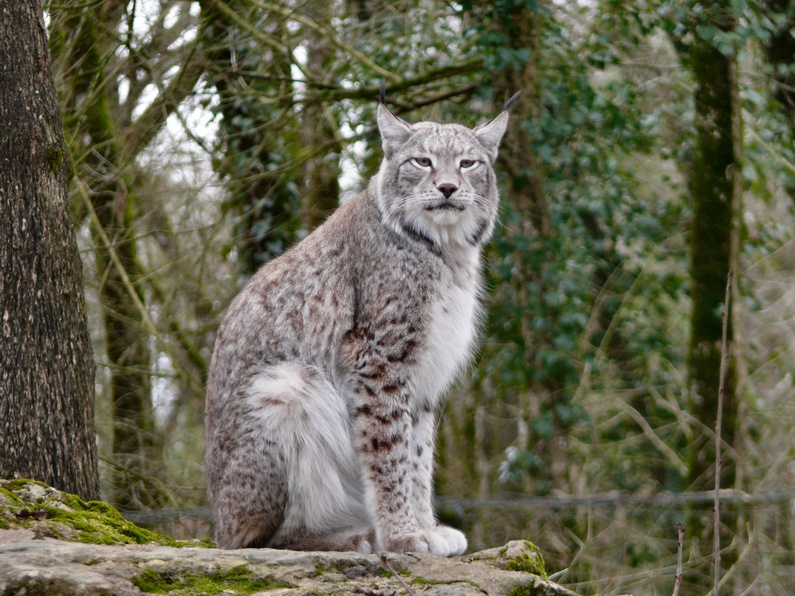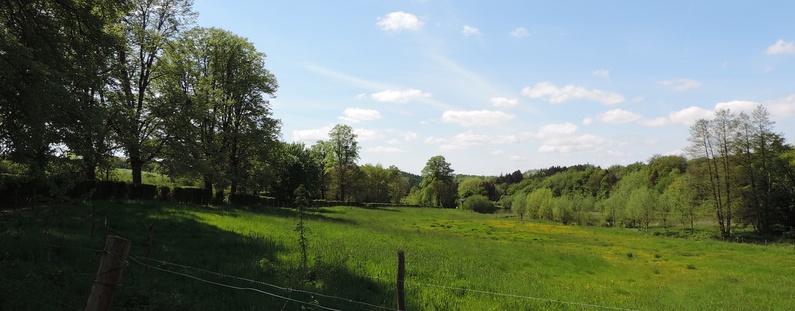
Belgium's climate solution: nature reserves in Wallonia?
Published on
Climate and nature policies are too often treated in a compartmentalised and separate manner. However, nature provides all kinds of ecosystem services supporting both climate change mitigation and adaptation. Why not better integrate these policy areas and take profit from their synergetic benefits?
On 10th May 2015, the nature protection organisation, Natagora, launched a passionate call to the Walloon minister in charge of nature, René Collin, in favour of the designation of new nature reserves in Wallonia, the French-speaking southern region of Belgium. This call followed the Walloon Region's decision to put an end to the co-financing of nature reserves managed and sometimes owned by private organisations such as Natagora.
With more than 400 natural sites listed in Wallonia, these reserves surround us, but what exactly do we know about them?
We often underestimate the importance of these protected areas that, beyond their role as protector of our natural heritage, provide a wide array of free services for the benefit of society and the economy. The European network Natura 2000 that covers about 27,000 natural sites of “Community interest” in the EU (ed. click here for an interactive map of the network) generates yearly monetary benefits of about €200-300bn, approximately 2-3% of the EU’s GDP.
According to the 2015 State of Nature in the EU report published on 20 May by the European Environment Agency, Natura 2000 seems to be an effective measure to protect threatened species as conservation is more successful on protected sites than in non-protected areas. The report also indicates that about 70% of habitats in Belgium are in unfavourable or bad condition. Unfortunately, this number echoes the already poor statistics of biodiversity in Wallonia, where 31% of species are endangered or vulnerable, and 9% have already disappeared. Nevertheless, beyond their intrinsic and cultural value, it is crucial to preserve and reinforce our Walloon biodiversity and ecosystems in order to tackle climate-related challenges. 
According to The International Union for Conservation of Nature (IUCN), the global network of protected areas is responsible for about 15% of terrestrial carbon storage. It also provides a series of ecosystem services that support society’s adaptation to climate change such as food and water supply, and disaster risk reduction. The peat bogs of “Les Hautes Fagnes” in eastern Belgium, for example, play a crucial role in climate mitigation and can capture up to ten times more CO2 than mineral soils. A 2004 study on the impacts of climate change in Belgium, already raised the alarm bell in 2004, and claimed that the last unspoilt peatlands would likely disappear in the 20-50 years to come.
Moreover, the presence of swamps and other wetlands near streams that experience flooding allow not only to reduce the floods, but also to decrease the likelihood of droughts, while at the same time supporting a more rich and flourishing biodiversity. Finally, increasing the number of urban nature reserves and promoting more green spaces in cities would be beneficial for the reduction of urban temperatures by mitigating the “urban heat island” effect, and would simultaneously improve air quality, and in certain cases, water supply. A healthy nature, characterised by a rich biological diversity does indeed enable ecosystems to better resist and adapt to the impacts of climate change.
The Belgian Climate Change Adaptation Strategy, approved in 2010, calls for the preservation of our forests’ genetic diversity and the conservation of ecosystems that have only slightly been affected by human activities in order to improve their resilience. This strategy, which provides the framework for adaptation policies in Belgium, insists on the importance of connecting, as much as possible, climate and biodiversity policies in decision-making. Besides, it recommends including the protection of natural systems as one of the five categories of Belgium’s future adaptation action plan.
The Final Report on Climate Change Adaptation in Wallonia, commissioned by the Walloon Agency for Air and Climate, echoes the strategy and reminds that biodiversity constitutes the principal source of capital from which we will draw the resources needed to adapt to climate change, whether in agriculture, forest, or health. It goes further by stating that it is urgent to preserve biodiversity to uphold our adaptation capacity.
Why then is Wallonia so slow in putting into place adequate protection measures, so crucial for the future prosperity of our region?
 In Wallonia, only 0.7% of the territory benefits from the nature reserve status, despite experts prescribing an ideal size of about 5-10% of the land to bring about successful conservation. Furthermore, the Walloon territory is particularly affected by habitat fragmentation, due to its high level of urbanisation and various harmful agricultural and forestry practices. This fragmentation further threatens Walloon biodiversity by preventing some species from migrating, a key element of wildlife’s climate change adaptation.
In Wallonia, only 0.7% of the territory benefits from the nature reserve status, despite experts prescribing an ideal size of about 5-10% of the land to bring about successful conservation. Furthermore, the Walloon territory is particularly affected by habitat fragmentation, due to its high level of urbanisation and various harmful agricultural and forestry practices. This fragmentation further threatens Walloon biodiversity by preventing some species from migrating, a key element of wildlife’s climate change adaptation.
Despite the Walloon Government’s decision to designate 18 new nature reserves and extend 3 existing ones, the region still has a long way to go to implement its commitments and effectively preserve its nature. Belgium has recently been given notice by the European Commission that points out the long delay the region has accumulated in effectively setting up the Walloon Natura 2000 sites. The measures requested by the European Union were taken only for 57 sites out of the 240 listed in Wallonia.
It must be acknowledged that Wallonia is still far from realising the objectives enshrined in Belgium’s National Biodiversity Strategy, written in follow-up to the country’s commitments in the negotiations of the UN Convention on Biological Diversity. In this strategy, Belgium committed to protect 17% of its terrestrial territory and inland waters through networks of protected areas. The strategy mentions that “For the time being, only a limited number of sites at land are effectively managed and it is vital that appropriate management plans are adopted and implemented as a matter of urgency.” It also insists on the importance of preserving smaller landscape elements that play a crucial role in ensuring the connectivity between natural areas and increase their resilience. However, in the absence of a complete mapping of Wallonia’s natural heritage and ecological network, the protection of these areas is slowed down.
It is thus of utmost importance that the Walloon Region puts an end to the compartmentalisation of these debates ( with its Minister for Environment being in charge of climate and its Minister for Agriculture being in charge of nature-related policies), and takes urgent measures to better coordinate them. Considering these two topics as two sides of the same coin will help maximise their synergies and support effective and efficient action in favour of the sustainable development of our region.



